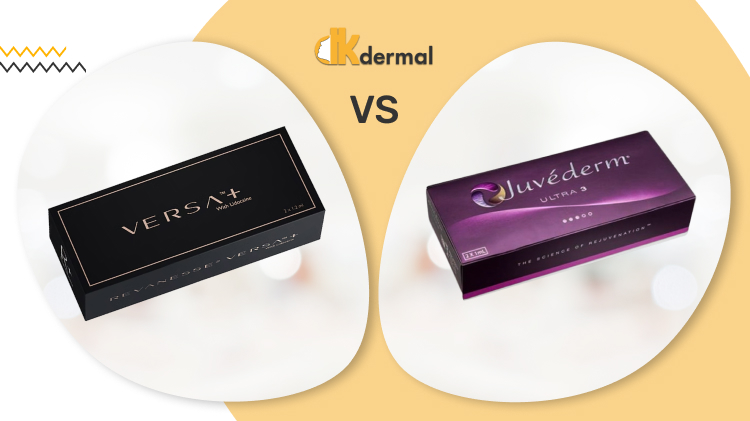Among a great variety of birth control methods such as condoms, pills, injections, or implants, IUDs (or, as they are also called, intrauterine devices) are among the most effective ones. In this article, we are going to take a closer at IUDs by means of defining what they are and how they work. As well, we will check out the main warning signs you have to be aware of when using an IUD. So, let’s delve right in!
Post Scriptum: If you are looking for a wholesale supplier of IUDs and other medical preparations, check out what DKdermal offers.
What Is an IUD and What Role Does It Play in Birth Control?
As its title suggests, an IUD is an intrauterine device that is used in planned parenthood. When being more precise, it is a flexible, tiny, T-shaped, and plastic thing that is put into your uterus to provide you with protection from unintended pregnancy.
Among the basic characteristics of IUD contraception are the following ones:
- It might prevent pregnancy for a time period of up to seven years. Therefore, an IUD is considered to be an extremely long-lasting method of birth control;
- It is absolutely reversible, so you will be able to get pregnant shortly after an IUD will be removed from your uterus;
- It is extremely effective and will provide you with ninety-nine percent of efficiency.
Moreover, IUDs might be subdivided into:
- Hormonal IUDs (namely, the ones that are based on a synthetic progesterone hormone called progestin);
- Non-hormonal IUDs (or, in other words, copper-based IUDs).
The most well-known brands of IUDs are:
- Mirena;
- Kyleena;
- Liletta;
- Skyla;
- Paragard.
While being considered to be safe and efficient, the above-mentioned IUDs are approved by FDA.
Like any other method of family planning, an IUD has its own pros and cons. Here is the list of the main advantages of the preparation:
- The basic characteristics of an IUD (namely, its durability, reversibility, and efficiency) are definitely beneficial;
- Under normal circumstances, an IUD is not felt after the insertion and should not cause any inconveniences;
- It requires little to no maintenance from your side after being inserted.
On the other hand, however, an IUD has a couple of disadvantages, such as:
- Possible side effects and complications;
- It might be displaced or fall out;
- It does not protect you from sexually transmitted diseases.
Therefore, it’s totally up to you to decide whether you would like to try out an IUD or not when taking the above-mentioned pros and cons into account.
How Does an IUD Insertion Work?
When talking about the working principle of an IUD, it is essential to mention that the device has to be inserted exclusively by a certified and experienced health care practitioner. Here is how it usually works:
- After investigating the overall condition of your vagina, cervix, and uterus, health care practitioners will disinfect them and apply a local anesthetic if needed;
- Then, they will insert the IUD into your uterus with the help of a special plastic tube and cut off the IUD strings (so that they will remain three centimeters outside your cervix).
That’s basically it, as the procedure of the insertion of the IUD is pretty straightforward and takes about fifteen minutes in general.
Shortly after the IUD is inserted, it will start working by means of:
- Thickening the mucus in the cervix and thus preventing the sperm from reaching the egg and fertilizing it;
- Thinning the lining of the uterus and thus preventing the fertilized egg from being implanted.
As a result, you will have little to no chance of getting pregnant while the IUD remains within your body.
One more thing that is worth being mentioned here is that an IUD might also work as an emergency contraception method. In case you insert the device within five days after having unprotected sex, you would still have a chance to prevent the unintended pregnancy.
What Are the Main Warning Signs When It Comes to an IUD?
Despite the fact that an IUD is regarded to be a safe method of contraception and you are unlikely to have any problems with it under normal circumstances, you would still have to take caution of a number of warning signals. So, let’s take a closer look at the main ones:
- Your IUD strings feel longer or shorter than they used to be;
- You cannot feel the strings at all;
- You feel that the plastic bottom of the IUD comes out of your cervix;
- You experience heavy vaginal bleeding or pelvic cramps;
- You feel pain or bleeding during the sexual intercourse;
- You have fever, chill, or troubles with breathing without any particular reason;
- You experience an increased vaginal discharge or breast tenderness;
- Etc.
The above-mentioned symptoms (like abnormal bleeding or unpleasant feelings in your inner organs) might serve as indicators that an IUD has migrated to your abdominal cavity or even perforated your uterus. So, please check the situation with your device on a regular basis and contact your health care practitioner as soon as possible in case of experiencing any of the complications that are enumerated above.
A Safety Note: It is strongly recommendable to check the location of your IUD strings at least once a month in order to prevent the risk of health complications after the insertion of the IUD.
As well, please pay attention to the fact that such symptoms as pain for a few days after the IUD placement, irregular menstrual bleeding, spotting between your periods, or other side effects might still take place after the insertion of the device and are not necessarily caused by any serious health complications. Thus, do not worry in case of experiencing them but rather make an appointment with your health care practitioner to make sure that the situation is under control.
To Sum Up
When summarizing all of the above-mentioned information, we might make a conclusion that an IUD is an efficient method of birth control these days. While having a great number of benefits on the one hand and a list of drawbacks on the other, both hormonal and non-hormonal IUDs have a similar working principle and protect you from an unexpected pregnancy. Still, there is a list of certain warning signs you have to be aware of while using an IUD. So, pay attention to them and stay healthy at all times!





